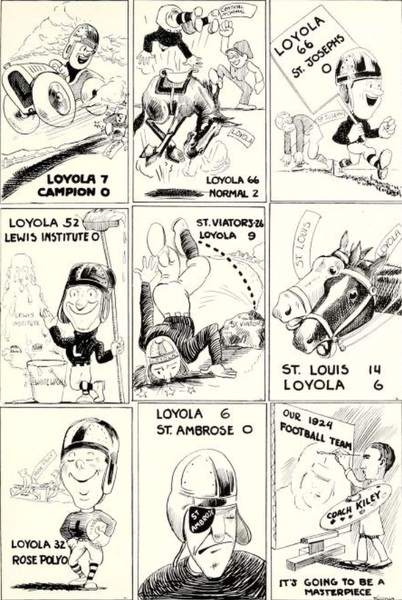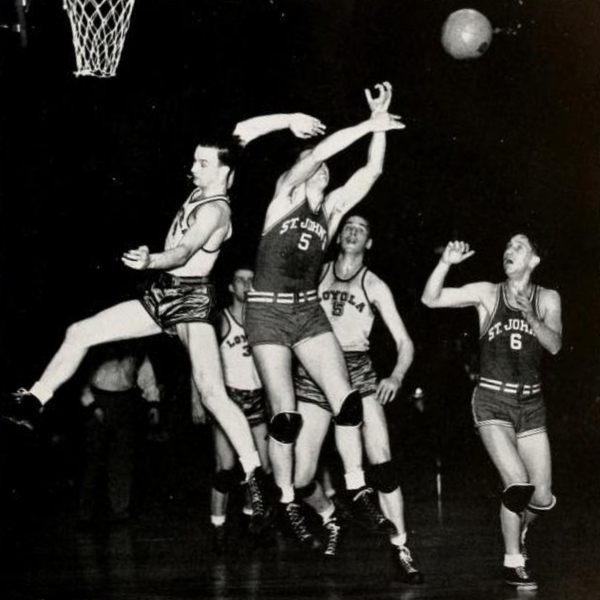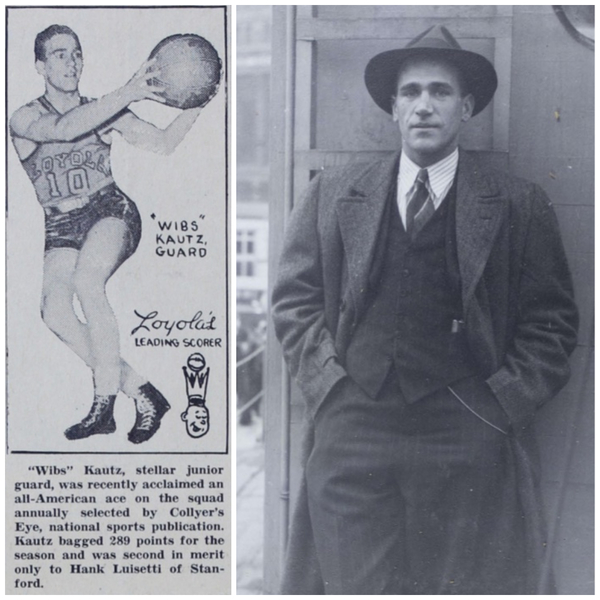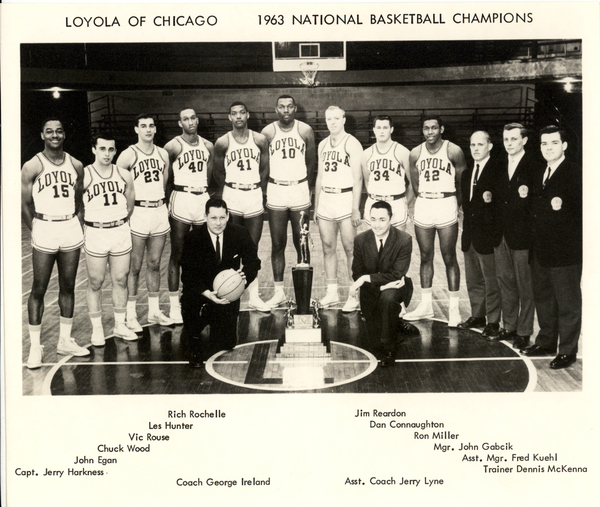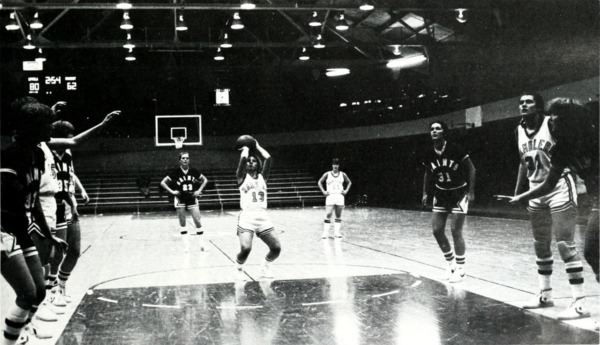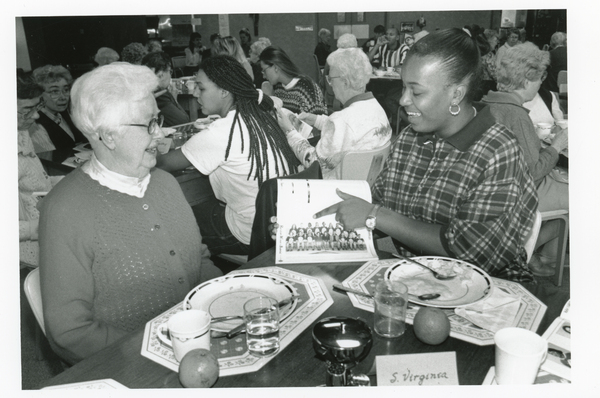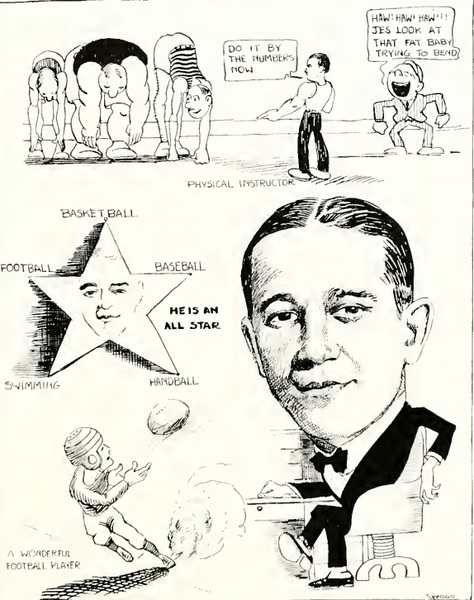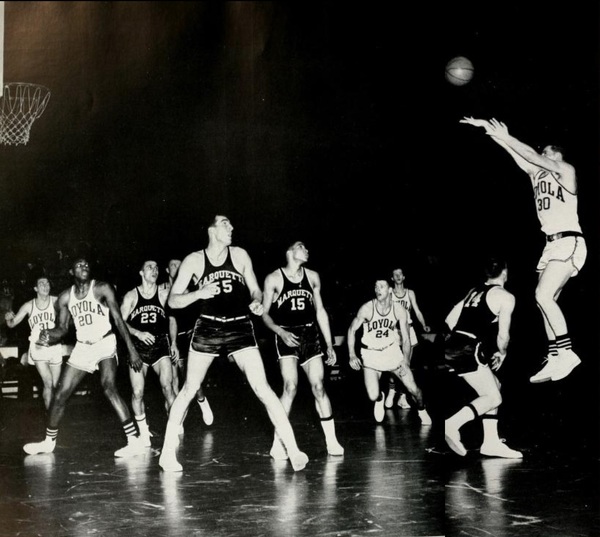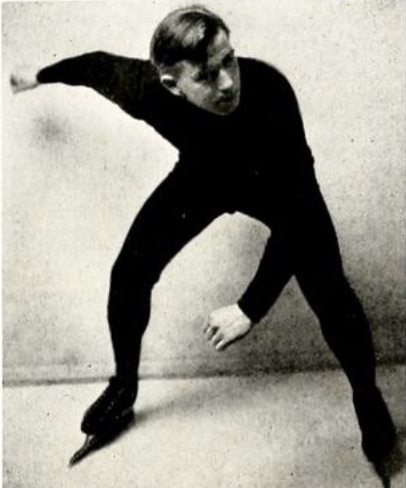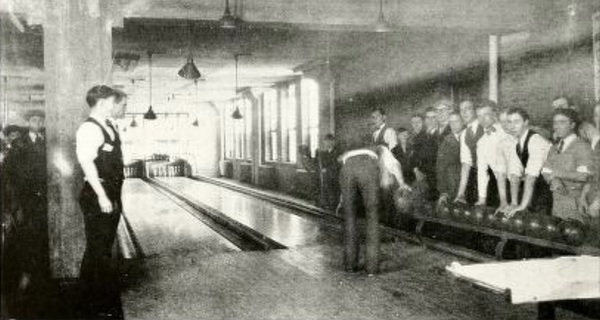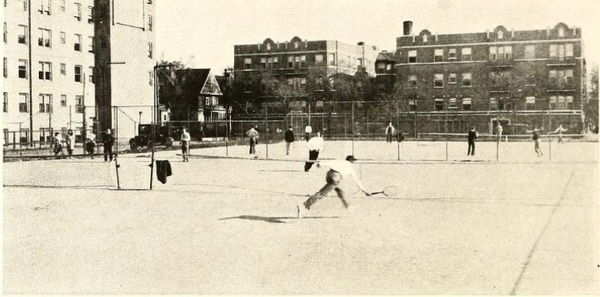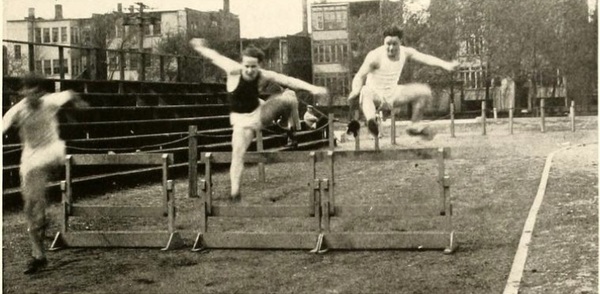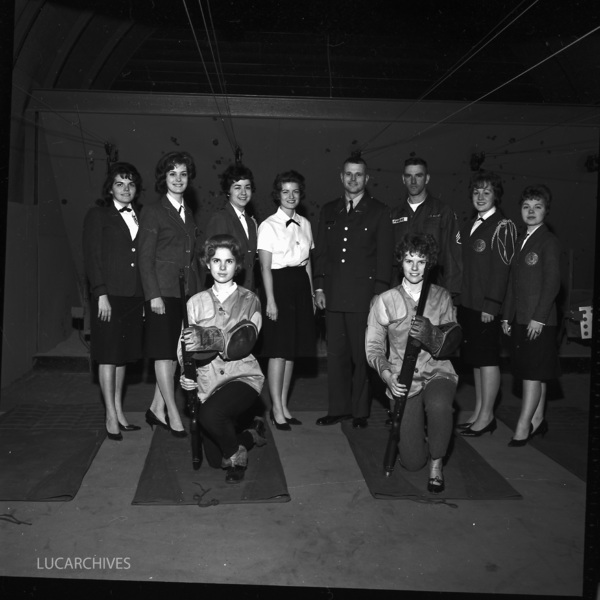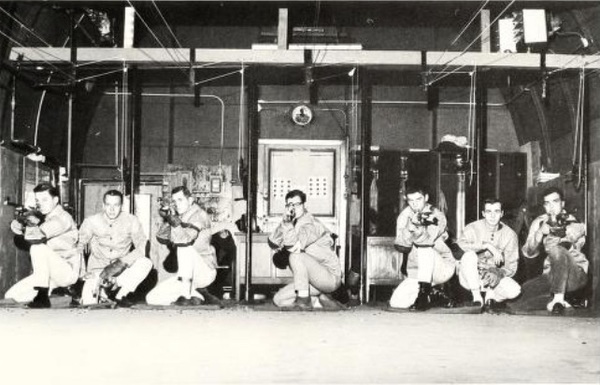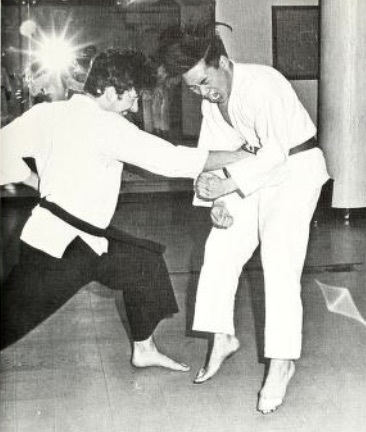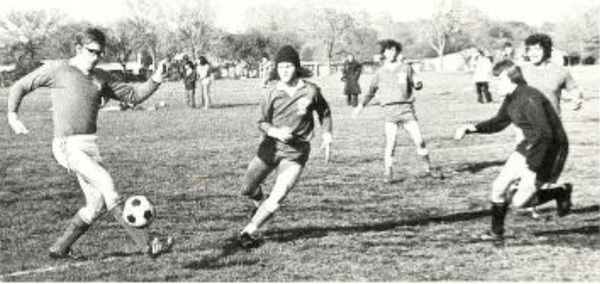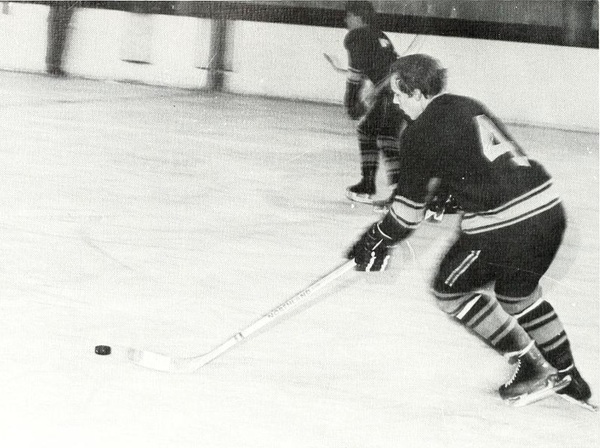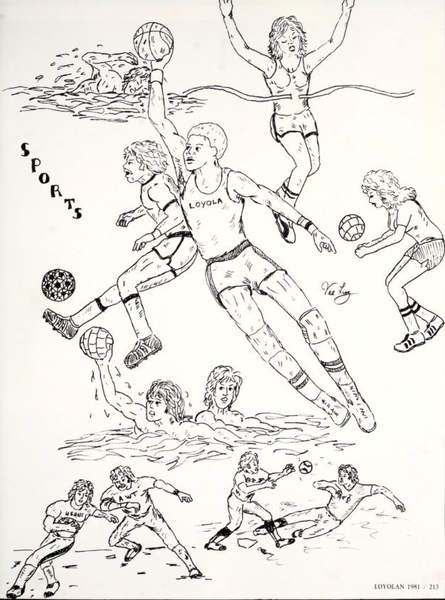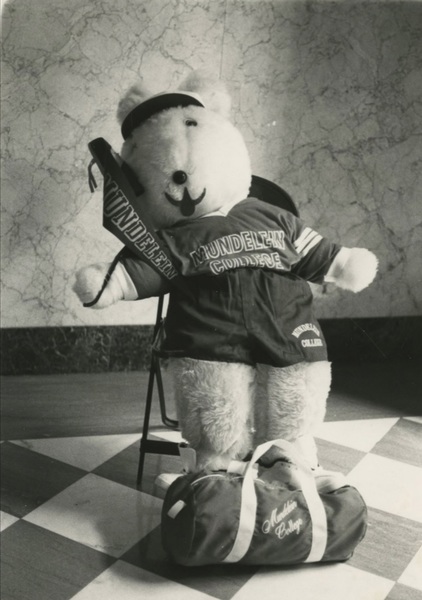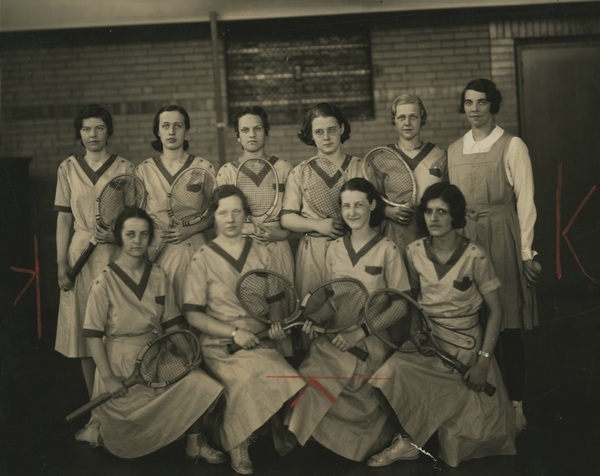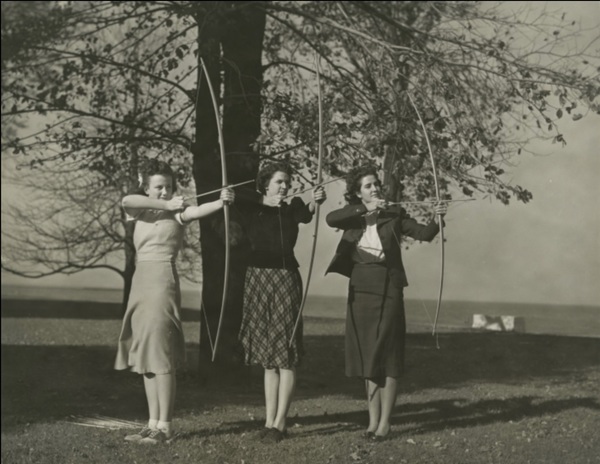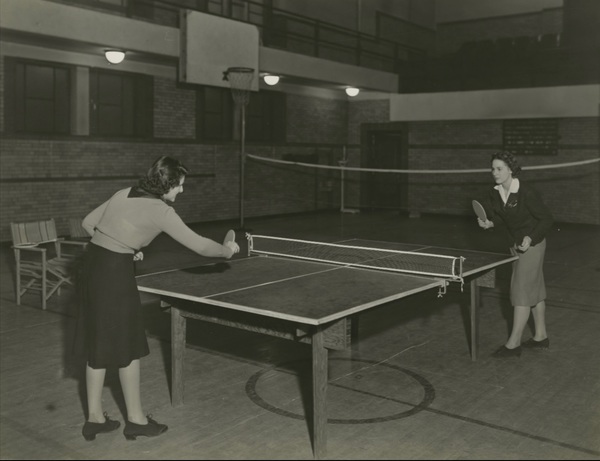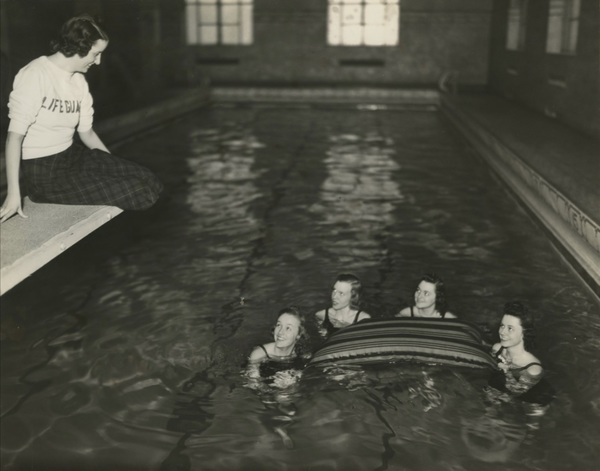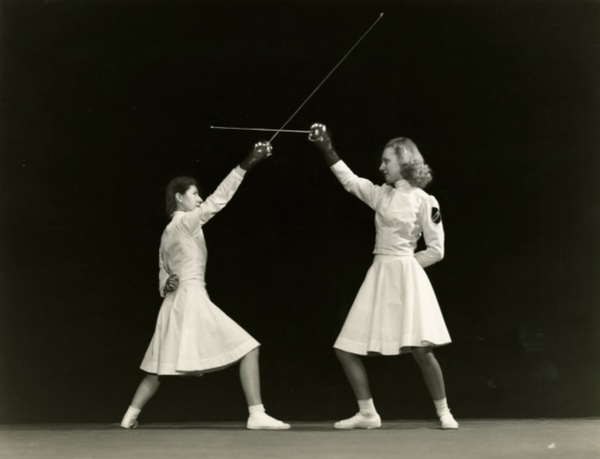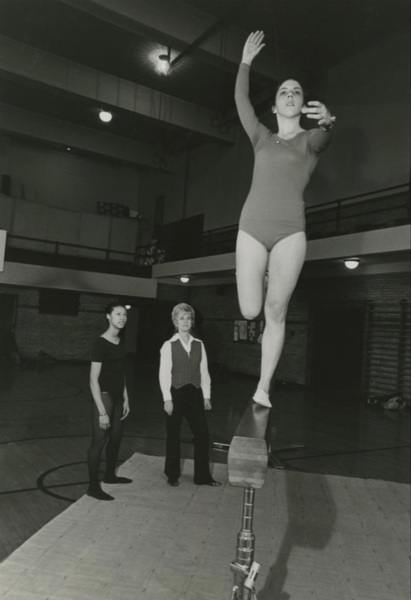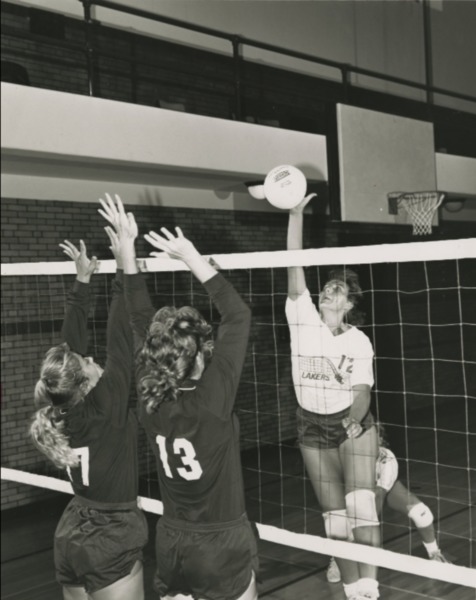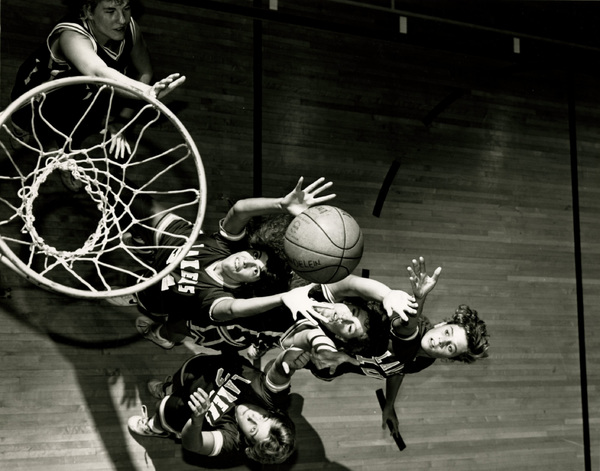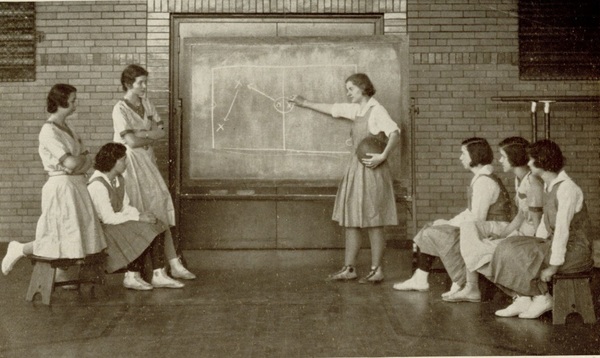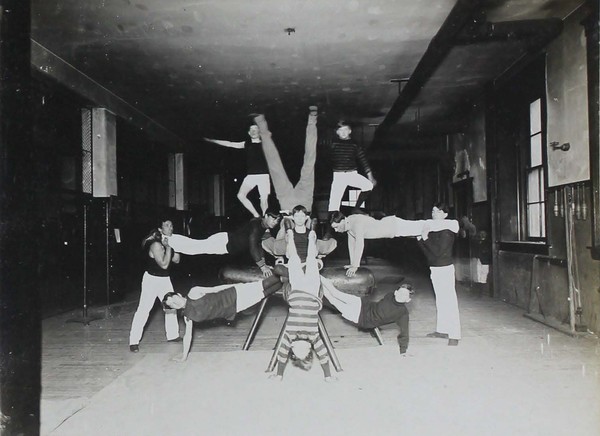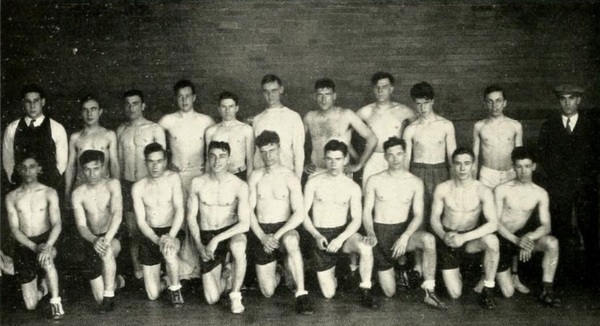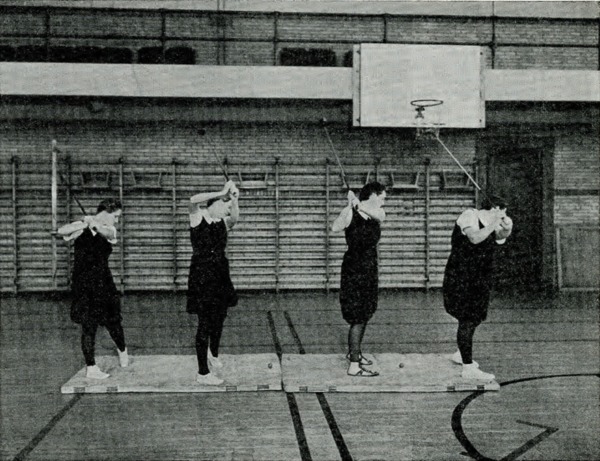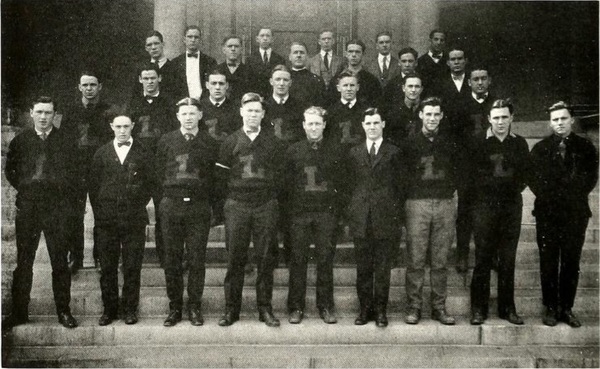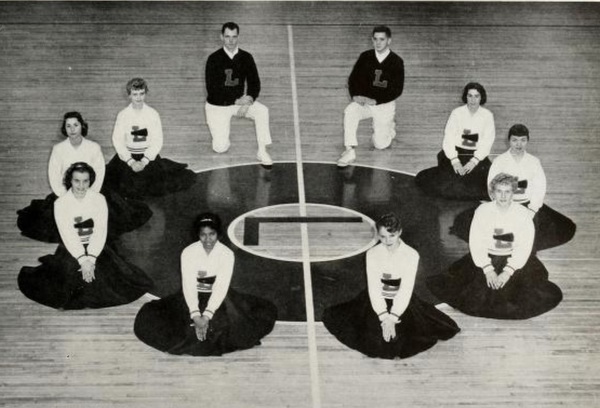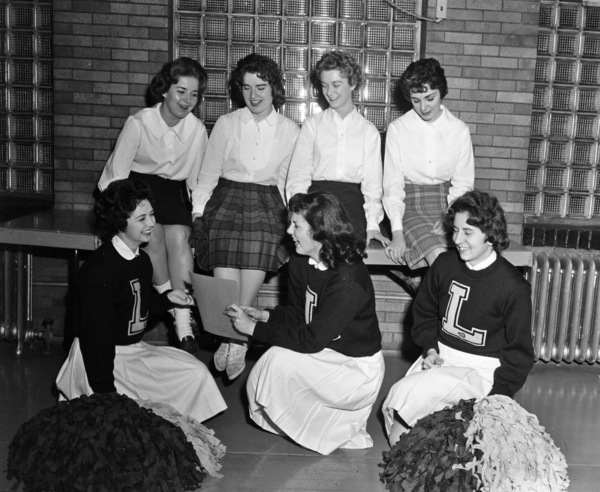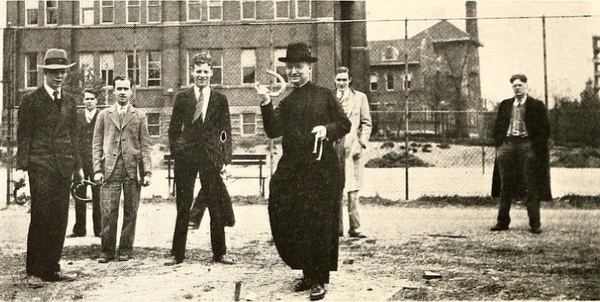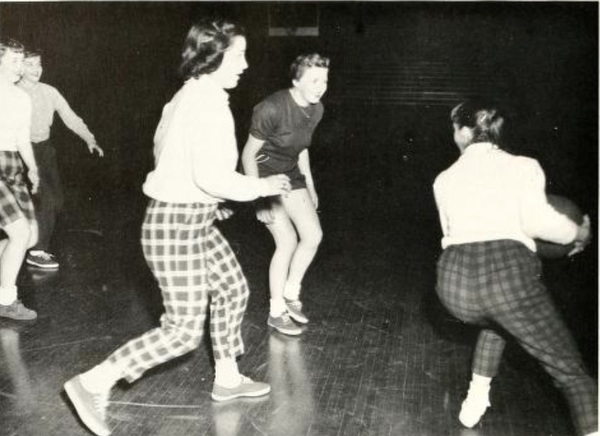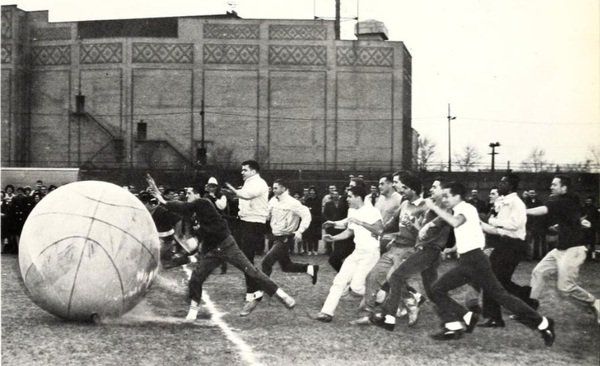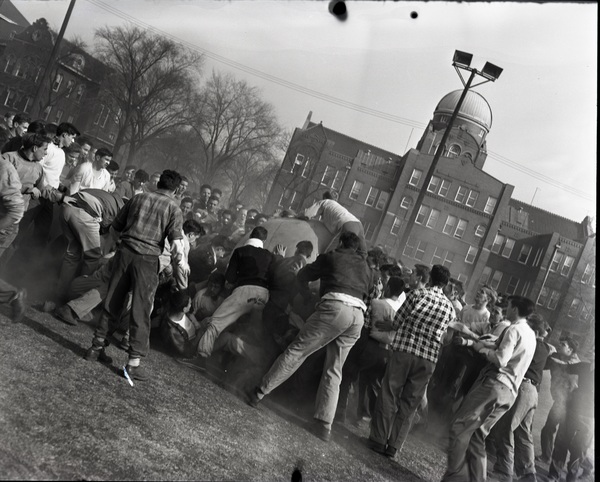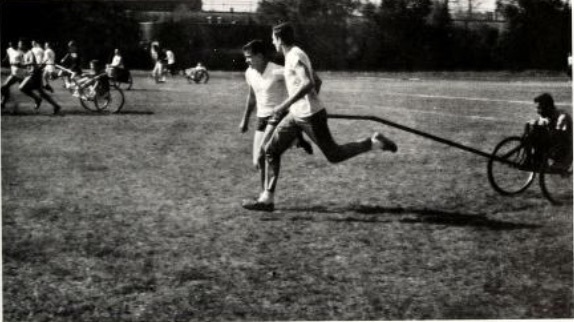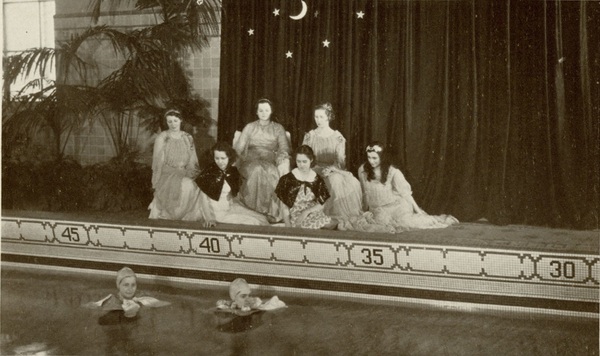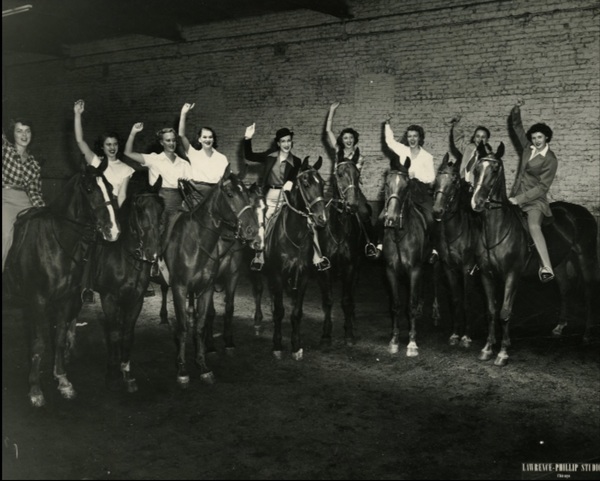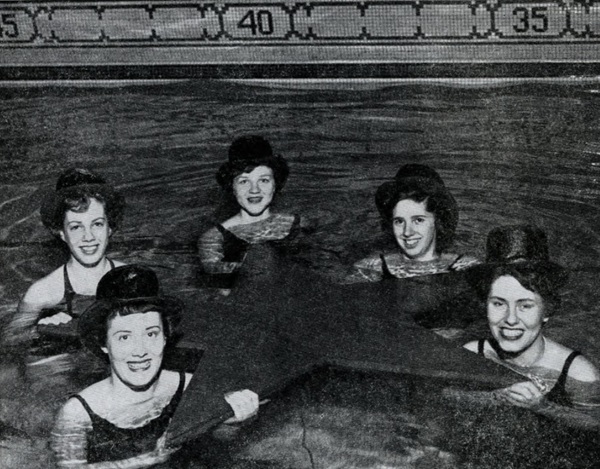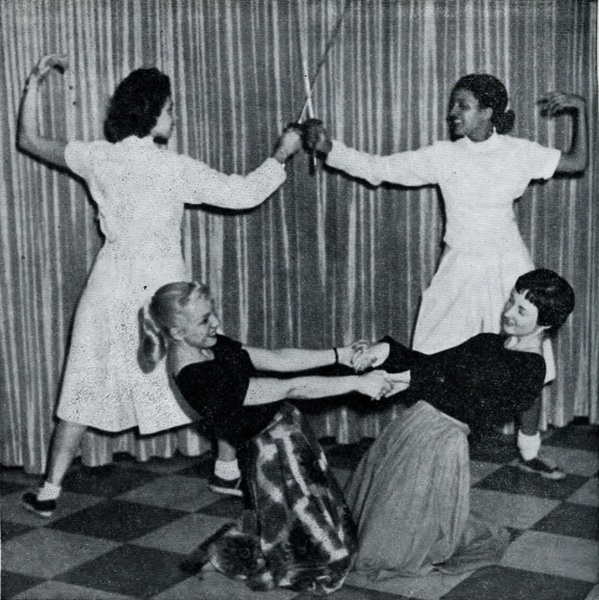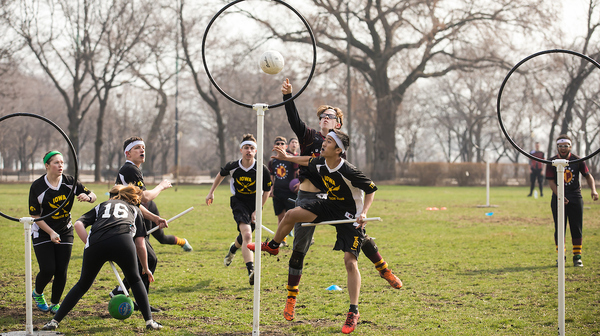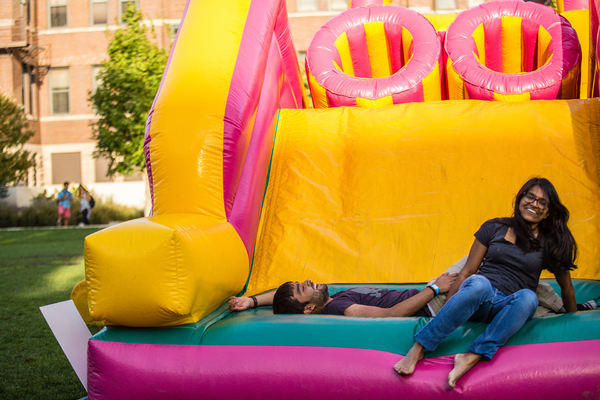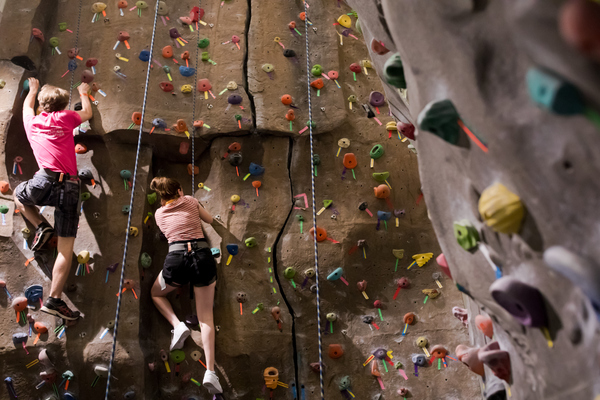Athletics and Sports
Sports are the beginning of life’s struggles. Indulged in with discretion, they form a fair amount of education […]
With their importance in the scheme of Jesuit education, sports have played a central role in student life at Loyola from the beginning. To traverse sports trends over 150 years of Loyola's history is to also gain a glimpse into the evolution of physical culture in general. While student interests, administrative decisions, and wider trends in the conduct of college sports have greatly changed the nature of sports and sporting events at Loyola, one thing remains constant - students continue to gain a fair amount of education through engaging in sports.
Major sports at Loyola in the early years
“A magic word which delights the heart of an American boy wherever he hears it spoken is baseball”
In the 1870s, one of the most popular sports at St. Ignatius College was baseball. Charles Comiskey (1859-1931), President of the White Sox Ball Club, was one of the first students at St. Ignatius College when the school opened in 1870. Comiskey’s connection with the baseball team endured even after graduation – the St. Ignatius Baseball team was able to use Comiskey Park for a big game annually. One of the games played at those grounds was against St. Joseph’s College in 1915, a game St. Ignatius narrowly won by 2-1. When the weather got cooler, students would play indoors. Baseball formed an important part of the Loyola experience even for non-players, as eloquently captured in this poem by J. Francis Quinn on the joys of being a baseball fan.
Football Season at Loyola
While April to October was baseball season at Loyola, football commanded the student population's attention after that ended. St. Ignatius College's first football team was formed in 1892. The sport gained popularity through the 1900s, and games were played against high schools and colleges. The popularity of the sport among the student population can be gleaned from the impressive turnout of the entire student population of 600 that showed up for the team's game against Marquette Academy in 1908. The total attendance "exceeded any that ever attended a college game here" at three thousand. By fall 1908, football appeared to have "almost entirely overshadowed" indoor baseball.
An interesting conundrum that the football coach at St. Ignatius College faced was not having enough "weight." Some years, a football team could not be formed due to the dearth of a "sufficient number of heavy men to try out for the team" and the lack of a suitable place to practice. Even with such challenges, the team took its training seriously and Loyola became the first major college in the United States to install a lighting system that would enable night football to be played. In the 1930 season, Loyola became the first major team in the Midwest to play night games, with four owl games at home. Yet, despite the investments in the training of the football team, Loyola administrators decided to abolish football after that season as they felt the team could not compete successfully under prevailing conditions, in which football had become increasingly commercialized. Four decades later, students revived club football, but the program ended after two seasons in 1971 due to a combination of financial and administrative woes. Club football was revived again in 2012 and in 2019, the team clinched the Great Lakes - West Conference championship.
Basketball at Loyola
Basketball began at Loyola in 1907. Interestingly, it was apparently initially perceived by some to be "too tame for the fiery spirits of young Americans." At the beginning, two leagues (a major and minor league) were formed. The best players from the leagues were eventually picked as the college team. Loyola's men's basketball team grew from strength to strength over the years, becoming NCAA Champions in 1963 and entering the Final Four for the NCAA Championship in 2018.
One of the most noteworthy athletes on Loyola's early men's basketball teams was Wilbert “Wibs” Kautz. Kautz played for three years as a starter on Loyola's basketball team and was acclaimed an "all-American ace" in 1938 by Collyer's Eye, a national sports publication. He was also the freshman basketball coach in 1941. However, Kautz sustained injuries sometime during the season due to his own activities on the professional basketball front and was forced to remain inactive for the remainder of the season. The freshmen then had to be left to their own devices. Following military service in World War II, Kautz played on the Chicago Stags roster in the Basketball Association of America.
The first mention of the women's basketball team in the student yearbook occurs in 1976. By 1981, the team became known as the "Loyola Lady Ramblers" and began making waves at state championships. In the 1980-81 season, they finished third in the Indiana Association of Intercollegiate Athletics for Women (IAIAW) State Basketball Championships, and junior Mary Schoenhoff was named to the All-Tournament Team. Two seasons later, they emerged victorious in the 1982 Chicago State Tournament, with senior Faith Minnaugh leading the National Collegiate Athletic Association in assists.
Coaches comprised another crucial component of basketball's development at Loyola. In particular, Leonard Sachs, regarded as the "ace of American Basket-ball coaches", was dearly admired and respected during his time as Loyola's basketball coach from 1923 until his sudden death in 1942. During his tenure, he was also involved with helping the baseball and football teams. Students remarked that under his teaching, "gym classes are more a pleasure than a work." George Ireland, who led the 1963 team to win the NCAA championship, was another well-loved coach who broke down color barriers in the college sport amid the Civil Rights Movement. At the time of his resignation due to health reasons, George Ireland had held the position of head basketball coach at Loyola for the longest time in the university's history, and won more games than any Loyola coach. Today, a figure who commands just as much interest and respect as the coaches of yesteryear is Sister Jean Dolores Schmidt, BVM, the official team chaplain for the men's basketball team. The team attributes a critical part of its success to Sister Jean's pre-game prayers and advice to players.
New Sports at Loyola
The 1920s saw a new line-up of sports at Loyola with tennis (1924), golf (1924), track (1925), bowling (1927) and cross-country (1927). No sport was too small to find a home at Loyola - the ice-skating team for the 1924 and 1925 seasons was composed of only one member, the "Flying Sophomore" Lars Lundgoot.
After World War II, some students enrolled in Loyola's Military Science course came together to form a rifle team in 1949, which appeared to have separate men and women's teams, and a drill team in 1952 . The latter entered intercollegiate competition in 1953, and gave exhibitions in the Chicago Stadium, on TV and upon request from various organizations. In the 1960s and 1970s, a new line-up of sports such as horseback riding (1960), sailing (1963), soccer (1964), water polo (1965), karate, and hockey were introduced at Loyola, providing more sports choices to students.
Sports at Mundelein College
Students at Mundelein College* likewise actively participated in a plethora of sports from the very beginning. Some of the initial major sports at Mundelein included soccer, basketball, swimming, volleyball, baseball, and track. Minor sports included tennis, horseback riding, and hiking.
A popular sport introduced in 1937 was fencing. Although it appears to have been primarily available to drama and speech majors, students were reassured that it could be "pursued by any devotee at home". Interested students could also watch the fencers practice at the gymnasium.
Mundelein sports teams steadily garnered accolades for their stellar performances. The volleyball team ended their season in 1959 undefeated, and Janet Parmalee and Melita Lynch placed third and sixth, respectively, in the 1951 Illinois Fencing Championship meet.
Sports and Education
Sports was an integral component of education at both schools in the early years, with physical education requirements and exhibitions that showcased students' athletics development. St. Ignatius College students would put on an annual public exhibit for their physical culture classes, demonstrating exercises on the horizontal and parallel bars, various drills and "fancy club swinging".
Over at Mundelein, students were required to take a physical examination at the start of the school year. Two hours of physical education were also mandatory, one of which had to be devoted to swimming and the other to sports or gymnasium. Horseback riding classes appear to have been a popular way of obtaining gymnasium credit. The Physical Education Department also put up an annual spring program, where students demonstrated gymnastic exercises to themes such as "The Garden Blooms". Additionally, students could explore various sports through Hobby Hour, a program where a certain sport was conducted for an hour at the gym every day.
Apart from incorporating sports education into the curriculum, administrators also played a crucial role in determining the sports played at the colleges. For instance, in December 1930, Loyola university officials decided to promote sports such as boxing that had not previously been part of the athletic program.
Athletic Associations and Cheerleaders
Athletic associations played significant roles in the development of student athletics by implementing programs encouraging participation in various sports. Aspiring members interested in joining the Woman's Athletic Association at Mundelein (established in 1931) had to regularly attend meetings, hold an active interest in all sports, be in residence for one semester, and earn a minimum of fifty points by participating in various sports events (for example, hikers could accumulate 1 point per mile).
Over at Loyola, the Monogram Club aimed to continue "the friendships built up on the athletic field" and "uphold the high standards of athletics at Loyola." Established in 1924 by Roger Kiley, a football and baseball coach, the club was an honorary organization composed of lettermen, athletes who had earned letters through a certain level of participation in varsity sports. Following the abolition of football in 1930, the club ceased to function actively but was revived again in 1932 at the urging of athletes who had received their letters but not been initiated. Around 1939, the club's focus shifted to making the student body "athletic conscious." Another important association was the Intramural Association, inaugurated in December 1930. The Association sought to increase student participation in sport by holding a series of tournaments in various sports throughout the academic year. Today, athletes are honored for their achievements with Student Athlete Awards conferred at the annual Excellence Awards Ceremony.
Cheerleaders likewise held vital roles in athletics. In 1924, Loyola's cheerleading team was a single student, George A. Lane, Jr, who nevertheless "materially heightened" the enthusiasm of students with his "poetic cheers", fluent and musical voice, and "the grace and nerve of his hand-springs." Two years later, the cheerleading team grew in size to three members. The admission of co-eds to Loyola further gave a boost to the cheerleading team. Mundelein students also formed their own cheerleading team, which seems to have collaborated with Loyola's team from time to time.
Events
Intramurals
Several exciting sports events were featured on the academic calendar of both schools. Intramural sports at Loyola, a tradition which still continues to this day, formally took off in 1931. The sports played differed by season, ensuring that students had a variety of sports to look forward to throughout the year. Interclass competitions were also held at Mundelein, where the class winning the most games in major sports could walk away with a silver trophy.
One of the more unique tournaments held during Loyola's intramurals was the horseshoe tournament. Introduced in 1928, horseshoe pitching quickly gained popularity at Loyola. The sport's popularity was such that in the first year of the tournament, participant numbers were so overwhelming that the semi-finals and finals could not be held before the close of the school year.
Another interesting event at the intramural meet was the Turkey Trot, a footrace. Perhaps more fascinating than the name of the race was the prizes winners could walk away with. For the 1941 competition, the winner walked away with a live turkey. The second, third, and fourth place winners got respectively a duck, a chicken, and a can of cranberries.
With the increasing number of female students, women's intramurals also began at Loyola around 1952. By 1957, it had become a weekly affair on Wednesday evenings at the Alumni Gym. Apart from various sports tournaments, judo classes, a swim workshop and a water show held by the Loyaquins were also featured. Additionally, there were co-ed nights where co-ed students squared off against the men's basketball and volleyball teams.
Push Ball and Greek Week at Loyola
One of the signature sports events at Loyola was the annual Push Ball Contest between Loyola freshmen and sophomores, which began in 1930 and was held annually until the 1960s. Students scored a point by pushing a ball that was 8 feet in diameter across their opponent's goal line. Should neither team score, the match was decided by the total yardage gained. The winning team was awarded an "old red barrel." This exhilarating account of the 1932 match gives an idea of the contest's intensity - the person sounding the start of the competition had to make a quick dash for safety from charging competitors! After the match, players would cool off in Lake Michigan and winners embark on a victory lap.
In 1960, another new sporting event was added to Loyola's calendar - the Greek Week games. These consisted of a series of competitions amongst fraternities and sororities. Events included a chariot race, the 220-yard dash, shot put, discus throw, the broad jump and a three-legged race.
Carnivals and Shows at Mundelein
The Water Carnival, an annual aquatic-themed performance put on by the Terrapins, was a well-loved event at Mundelein. The Terrapin Club was organized around Christmas 1930, and consisted of a junior and senior club. Aspiring juniors had to demonstrate their skills in various swimming styles to gain membership. Initially formed to stimulate interest in swimming, the Club also held social events. At the Water Carnival, members choreographed and performed ballets to themes such as "Toyland" and "Dream of the Ancient Mariner."
Members of the Equestriennes (formally the Mundelein College Riding Club) also put on an annual horse show with various events to highlight members' technical skills and promote showmanship. Unique events such as "musical chairs on horseback" and a costume race brought fun and cheer to the event.
The inaugural sports show held in 1956 provided another venue for Mundelein students to display their athletic prowess. Over 200 students demonstrated exercises such as baton twirling (with glow in the dark sticks), ballet, tap dancing and tinikling (a traditional Philippine folk dance). Although formally organized events provided an avenue for students to demonstrate their physical education, students also engaged in sports in a more casual way such as through ice skating parties.
Sports at Loyola Today
In recent years, new sports and sporting events have made their debut at Loyola. Founded in 2010, Loyola's Quidditch team, LUMOS, fields a roster of 50 players and train regularly (no flying is involved, unfortunately). E-sports has been added to Loyola's intramural sports program and a tournament has recently been held in 2019 for the video game, FIFA '20. Although chariot races no longer seem to be run during Greek Week, Sigma Chi's Derby Days event (begun in 2012) provides students with opportunities to square off against each other on obstacle courses. Activities such as rock climbing also furnish a fun opportunity for first-year students to get to know one another during their orientation.
Whether through friendships forged in the crucibles of practice drills and matches, lessons on sportsmanship and tenacity or just as a way of unwinding after a long day of lessons, sports remain a defining aspect of student life at Loyola.
*Mundelein College, founded and operated by the Sisters of Charity of the Blessed Virgin Mary (BVM), provided education to women from 1930 until 1991, when it affiliated with Loyola University Chicago.


